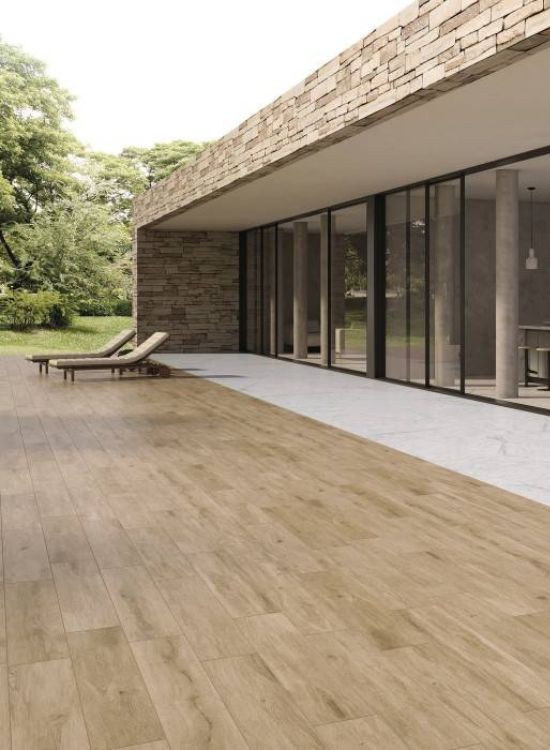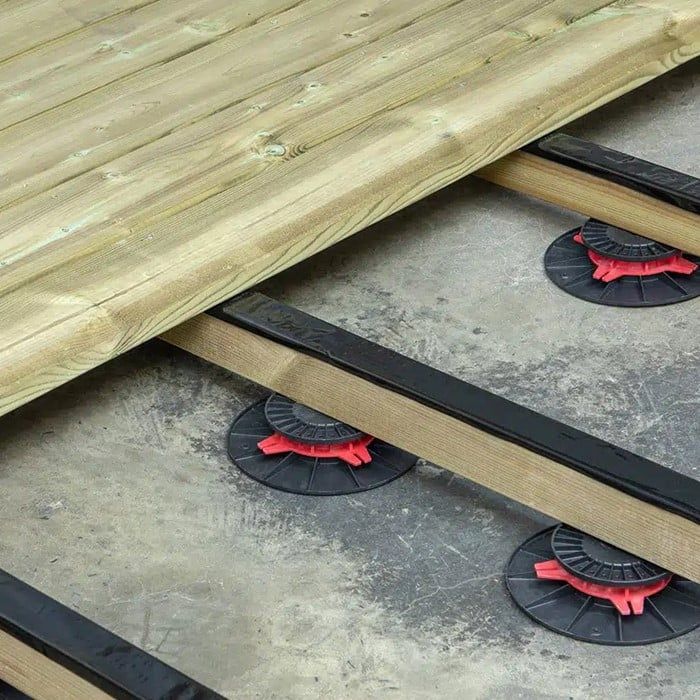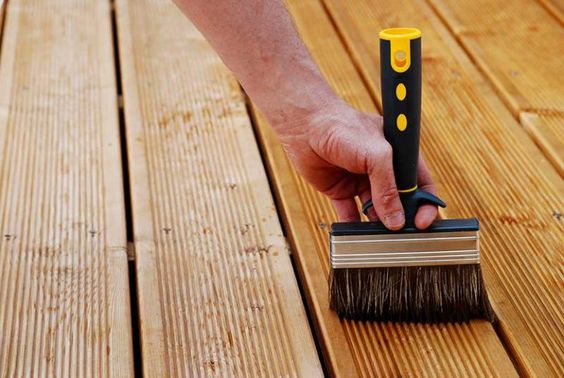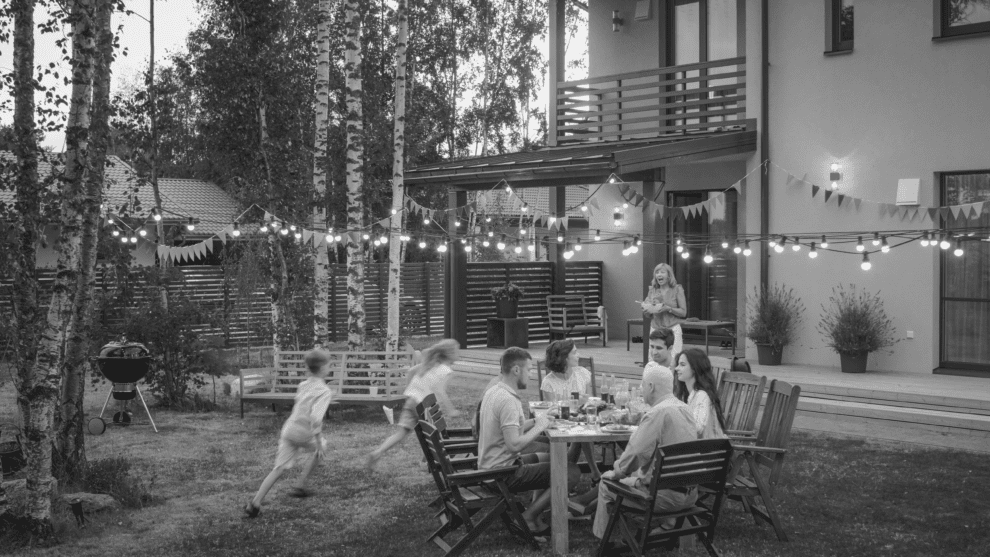Wood decking: guide to laying on blocks
Creating a wooden deck is much more than just adding to your outdoor space. It’s an extension of your home, a bridge between the interior of your house and the nature that surrounds you. Installing a wooden deck on joists and adjustable pedestals embodies both the practical functionality and natural aesthetics you’re looking for in your garden, patio or outdoor space.
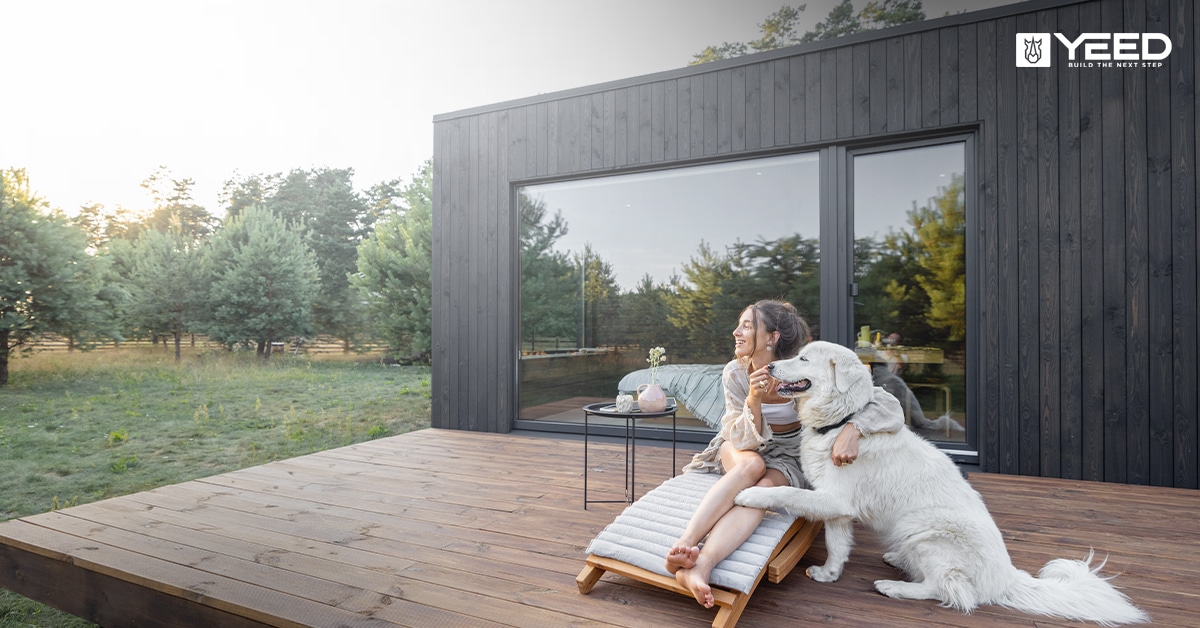
Choosing the right materials for the best wood deck construction:
When considering the construction of a wood deck, the choice of materials is of paramount importance. The durability, weather resistance and aesthetics of your deck depend largely on the materials you select.
Laying the studs on the floor :
Before you start laying the adjustable pedestals, careful ground preparation is essential to ensure the success of your project. The first step is to remove any unwanted vegetation and level any uneven surfaces. This ensures a solid, even base for your studs, which is crucial for the stability of your terrace.
See also: how to correct the slope of a terrace on blocks?
When installing the studs, make sure you strictly follow the manufacturer’s recommendations for spacing and arrangement of the studs:a uniform distance between each stud is essential to ensure even distribution of the deck’s weight and avoid points of excessive stress.
Take the time to carefully measure and mark the location of each stud, taking into account the dimensions of your deck and the manufacturer’s specifications. Once the studs are in place, regularly check their level and alignment to ensure a flat, stable surface for the construction of your deck.
Fixing the joists to the blocks :
The spacing between joists is a key element in the construction of a wooden deck. This parameter depends on various factors, such as the cross-section of the wood, the type of material used and the load the deck will have to support. Following the manufacturer’s spacing recommendations ensures even distribution of the deck’s weight, reducing the risk of unwanted warping or sagging. Careful planning of joist spacing contributes to the durability and stability of the entire structure.
Protection and treatment of joists :
As the basic structure of the deck, joists require adequate protection to ensure their longevity. Applying a waterproof bituminous strip to the top of the joists is an essential first step. This protective layer prevents water from penetrating the wood, reducing the risk of rotting and premature deterioration. Regular treatment with a suitable wood preservative is also recommended. This treatment enhances the wood’s resistance to weathering and UV rays, prolonging its lifespan and preserving its natural beauty.
See our article: Optimizing water drainage in decking!
Wood deck finishing and maintenance :
Once the terrace has been installed, the emphasis must be on finishing and maintenance to ensure its durability and aesthetic appeal. The use of matching skirting boards and posts ensures a neat finish to the deck’s contours, adding a touch of sophistication to the overall look. It’s also crucial to maintain adequate ventilation underneath the deck to prevent any unwanted moisture build-up, which could compromise the structural integrity of the wood.
To preserve the lustre and strength of your wood deck, a regular maintenance program is essential. Periodic cleaning with mild, non-abrasive products removes dirt and debris, preserving the wood’s natural beauty. In addition, the periodic application of a protective treatment maintains the wood’s integrity, protecting it from external aggression. Regular inspection of the structure can detect signs of damage or deterioration, enabling timely repairs to be made, ensuring the longevity of your outdoor oasis.
By following these steps with care and precision, you’ll ensure a solid, durable foundation for your wood deck, creating a welcoming, functional outdoor space to enjoy unforgettable outdoor moments.

